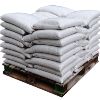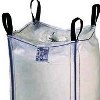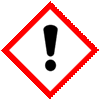| Anmol Chemicals is the pioneer manufacturers of Malic Acid, Pharmaceutical Excipients Food & Flavor chemicals in India. We offer Halal and Kosher Malic Acid made in an ISO9001, ISO22000 (FSSC22000) cGMP and GLP certified facility. Our group has several manufacturing facilities spread across the world, supported by toll manufacturers and representatives in UAE, Europe, Africa, USA, China and has several associated manufacturing facilities spread across India. All the Information on Physics, Chemistry, Applications, Uses and Technology on Manufacture of Malic Acid is in these pages. |
| The units in the group have one or more of the certifications like FDA GMP, ISO 9001, ISO 22000, HACCP, REACH, Kosher & Halal and DMF support is available. |





Mailc Acid GHS SDS, MSDS Sheet
Malic Acid Specifucations of Manufacturers
Malic Acid GHS SDS, MSDS Sheet, Material Safety Data Sheet
1. Product Identification
Synonyms: DL-Hydroxysuccinic acid, DL Malic Acid, (±)-2-Hydroxysuccinic acid
CAS No.: 6915-15-7, ( 617-48-1)
EINICS EC-No.: 230-022-8
Molecular Weight: 134.09
Chemical Formula: C4H6O5
Recommended usage: Industrial Manufacturing.
2. Hazards Identification
GHS, Globally Harmonized System Classification in accordance with 29 CFR 1910
Classification according to Regulation (EC) No 1272/2008
Acute toxicity, oral Category 4
Skin corrosion/irritation Category 2
Serious eye damage/eye irritation Category 2A
Specific target organ toxicity, single exposure; Respiratory tract irritation Category 3
Labelling according Regulation (EC) No 1272/2008
| GHS Label Elements  Irritant |
Signal Words: Warning
Hazard statements:
H302: Harmful if swallowed.
H315: Causes skin irritation.
H319: Causes serious eye irritation.
H335: May cause respiratory irritation.
Precautionary statements:
P262: Do not get in eyes, on skin, or on clothing.
P264: Wash skin thoroughly after handling.
P280: Wear protective gloves/protective clothing/eye protection/face protection.
P270: Do not eat, drink or smoke when using this product.
P273: Avoid release to the environment.
P330: Rinse mouth.
P362: Take off contaminated clothing and wash before reuse.
P301+312: IF SWALLOWED: Call a POISON CENTER or doctor/physician if you feel unwell.
P332+313: If skin irritation occurs: Get medical advice/attention.
P302+ P352 - IF ON SKIN: Wash with plenty of soap and water.
P305+ P351 + P338 IF IN EYES: Rinse cautiously with water for several minutes. Remove contact lenses, if present and easy to do. Continue rinsing.
P332+313: If skin irritation occurs: Get medical advice/attention.
P337+P313 If eye irritation persists: Get medical advice/ attention.
P501: Dispose of contents/container to authorised agents only.
Labelling in accordance with Directive 67/548/EEC:
Symbols: Xi Irritant
R36/37/38
R43
For the full text of the H-statements & R-phrases mentioned in this Section, see Section 16.
HMIS (Perceived): Health hazard: 2, Flammability: 0, Physical hazards: 0
NFPA (Perceived): Health hazard: 2, Fire: 0, Reactivity Hazard: 0
3. Composition/Information on Ingredients
Ingredient: Malic Acid
CAS No.: 6915-15-7
Percent: 100%
4. First Aid Measures
Always get medical attention after the first aid is over.
Inhalation: If Malic Acid is inhaled, remove to fresh air. If not breathing, give artificial respiration. If breathing is difficult, give oxygen and get medical attention immediately.
Ingestion: Never give anything by mouth to an unconscious person. Get medical attention.
Skin Contact: Immediately flush skin with plenty of water for at least 15 minutes while removing contaminated clothing and shoes. Get medical attention. Wash clothing and shoes before reuse.
Eye Contact: Immediately flush eyes with plenty of water for at least 15 minutes, lifting lower and upper eyelids occasionally. Get medical attention immediately.
5. Fire Fighting Measures
Fire: As with most organic solids, fire is possible at elevated temperatures or by contact with an ignition source.
Explosion: Fine dust dispersed in air in sufficient concentrations, and in the presence of an ignition source is a potential dust explosion hazard.
Fire Extinguishing Media: Water spray, dry chemical, alcohol foam, or carbon dioxide.
Special Information: In the event of a fire, wear full protective clothing and NIOSH-approved self-contained breathing apparatus with full face piece operated in the pressure demand or other positive pressure mode.
6. Accidental Release Measures
Small Spill: Use appropriate tools to put the spilled solid in a convenient waste disposal container.
Large Spill: Corrosive solid. Stop leak if without risk. Do not get water inside container. Do not touch spilled material. Use water spray to reduce vapors. Prevent entry into sewers, basements or confined areas; dike if needed. Eliminate all ignition sources.
7. Handling and Storage
Keep Malic Acid in a tightly closed container, stored in a cool, dry, ventilated area. Protect against physical damage. Isolate from incompatible substances. Containers of Malic Acid may be hazardous when empty since they retain product residues (dust, solids); observe all warnings and precautions listed for the product. Avoid dust formation and control ignition sources. Employ grounding, venting and explosion relief provisions in accord with accepted engineering practices in any process capable of generating dust and/or static electricity. Empty only into inert or non-flammable atmosphere. Emptying contents into a non-inert atmosphere where flammable vapors may be present could cause a flash fire or explosion due to electrostatic discharge.
8. Exposure Controls/Personal Protection
Airborne Exposure Limits: None established.
Ventilation System: A system of local and/or general exhaust is recommended to keep employee exposures as low as possible. Local exhaust ventilation is generally preferred because it can control the emissions of the contaminant at its source, preventing dispersion of it into the general work area. Please refer to the ACGIH document, Industrial Ventilation, A Manual of Recommended Practices, most recent edition, for details.
Personal Respirators (NIOSH Approved): For conditions of use where exposure to dust or mist is apparent and engineering controls are not feasible, a particulate respirator (NIOSH type N95 or better filters) may be worn. If oil particles (e.g. lubricants, cutting fluids, glycerin, etc.) are present, use a NIOSH type R or P filter. For emergencies or instances where the exposure levels are not known, use a full-face positive-pressure, air-supplied respirator. WARNING: Air-purifying respirators do not protect workers in oxygen-deficient atmospheres.
Skin Protection: Wear impervious protective clothing, including boots, gloves, lab coat, apron or coveralls, as appropriate, to prevent skin contact.
Eye Protection: Use chemical safety goggles and/or full face shield where dusting or splashing of solutions is possible. Maintain eye wash fountain and quick-drench facilities in work area.
9. Physical and Chemical Properties
Appearance: Malic Acid is white to off-white crystals or powder.
Odor: Faint acidulous odor.
Solubility: Soluble in water.
Density: 1,6 g/cm3 at 20 °C
pH: Approximately 2, Acidic.
% Volatile by volume @ 21C (70F): 0
Auto-ignition temperature: 340 °C
Molecular Weight: 134.09
Chemical Formula: C4H6O5
Melting Point: 131 - 133 °C - lit.
10. Stability and Reactivity
Stability: Malic Acid is stable under ordinary conditions of use and storage.
Hazardous Decomposition Products: Carbon dioxide and carbon monoxide may form when heated to decomposition.
Hazardous Polymerization: Will not occur.
Incompatibilities: Excessive heat, Strong oxidizers.
Conditions to Avoid: Heat, dusting and incompatibles.
11. Toxicological Information
LD50 Oral - Rat - male and female - 3.500 mg/kg
LD50 Intraperitoneal - Rat - 100 mg/kg
LD50 Intraperitoneal - Mouse - 50 mg/kg
Carcinogenic Effects: Not a reported carcinogen by IARC, NTP, ACGIH, OSHA.
12. Ecological Information
Toxicity
Toxicity to daphnia and other aquatic invertebrates:
Immobilization LC50 - Daphnia magna (Water flea) - ca. 240 mg/l - 48 h
Mobility in soil: No data available
PBT & vPvB: This substance/mixture contains no components considered to be either persistent, bioaccumulative and
toxic (PBT), or very persistent and very bioaccumulative (vPvB) at levels of 0.1% or higher.
13. Disposal Considerations
Whatever cannot be saved for recovery or recycling should be managed in an appropriate and approved waste disposal facility. Processing, use or contamination of this product may change the waste management options. State and local disposal regulations may differ from federal disposal regulations. Dispose of container and unused Malic Acid in accordance with legal requirements.
14. Transport Information
DOT: Not regulated
TDG: Not regulated
IATA: Not regulated
IMDG/IMO: Not regulated
ADR/RID:
Not regulated
15. Regulatory Information
USA:
TSCA 12(b): Not applicable
SARA 313: Not applicable
SARA 311/312: Acute Health Hazard
Clean Water Act: Not applicable
Clean Air Act: Not applicable
OSHA: Occupational Safety and Health Administration Not applicable
CERCLA: Not applicable
California Proposition 65: This product does not contain any Proposition 65 chemicals
Massachusetts Right To Know Components: No components are subject to the Massachusetts Right to Know Act.
Pennsylvania Right To Know Components: DL-Malic acid, CAS-No. 6915-15-7
New Jersey Right To Know Components: DL-Malic acid, CAS-No. 6915-15-7
Canada WHMIS Hazard: Class D2B Toxic materials
16. Other Information
EINICS EC-No.: 230-022-8
Hazard Symbol:
Xi = Irritant
Risk Phrases:
R36/37/38 = Irritating to eyes, respiratory system and skin.
R43 = May cause sensitization by skin contact. H302 = Harmful if swallowed.
H315 = Causes skin irritation.
H319 = Causes serious eye irritation.
H335 =May cause respiratory irritation.
Disclaimer:
***********************************
Our company provides this Malic Acid MSDS sheet in good faith but makes no representation as to its comprehensiveness or accuracy. This SDS sheet is intended only as a guide to the appropriate precautionary handling of the material by a properly trained person using this product. The above information has been compiled from various sources and has the possibility of discrepancy and being out-dated information. Individuals receiving the information must exercise their independent judgment and do further search in determining its appropriateness for a particular purpose. In no case shall our company be liable to loss or damages by the product user.
***********************************
Malic Acid Manufacturers
Anmol Chemicals
S-8, SARIFA MANSION, 2ND FLANK ROAD, CHINCHBUNDER, MUMBAI 400009, INDIA
TEL: (OFFICE) 91-22-23770100, 23726950, 23774610, 23723564. FAX: 91-22-23728264
e-mail: anmolc@mtnl.net.in

Exports to USA, Canada, UAE, Dubai, South Africa, Tanzania, Kenya, Nigeria, Egypt, Uganda, Turkey, Mexico, Brazil, Chile, Argentina, Europe Netherlands, Italy, Spain, Germany, Portugal, France, Malaysia, Indonesia, Thailand, Norway, Korea, Japan, etc.
Copyright and Usual Disclaimer is Applicable